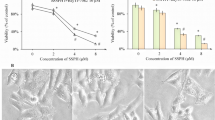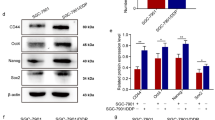Abstract
One of the most common causes of cancer mortality worldwide is hepatocellular carcinoma (HCC). Extracellular signal-regulated kinase (ERK1/2) pathway has been shown to play an important role in the development and progression of HCC. Here, we demonstrate that the immunosuppressive agent cyclosporin A (CsA) has the ability to increase the cellular growth in HCC (HepG2 cells) via activation of ERK1/2 signaling cascade. It was found that ERK1/2 phosphorylation induced by CsA was highly reduced in the presence of the reactive oxygen species (ROS) scavenger polyethylene glycol-superoxide dismutase (PEG-SOD). Furthermore, it was observed that inhibition of metalloproteinase activity using TAPI-2 prevents ERK1/2 activation by CsA. Moreover, a disintegrin and metalloproteinase domain 17 (ADAM-17) activity was found to be critical for ERK phosphorylation by CsA. In addition, CsA-induced ERK phosphorylation was highly reduced in the presence of either neutralizing anti-heparin-binding-epidermal growth factor (HB-EGF) antibody or UO126 (MEK inhibitor). By using the epidermal growth factor receptor (EGFR) tyrosine kinase inhibitor AG1478, it was found that EGFR is critical for ERK phosphorylation induced by CsA. Furthermore, CsA-induced cell proliferation was strongly reduced in the presence of either PEG-SOD or TAPI-2 or neutralizing anti-ADAM17 antibody or neutralizing anti-HB-EGF antibody or AG1478 or UO126. Collectively, these data demonstrate that CsA has the ability to activate ERK1/2 signaling cascade that could be translated into an increase in HepG2 cell proliferation. Furthermore, these data support the role of ROS, ADAM-17, and EGFR in ERK1/2 signaling activation and subsequent cell proliferation induced by CsA in HepG2 cells.










Similar content being viewed by others
References
Akool E-S (2015) Molecular mechanisms of the protective role of wheat germ oil against cyclosporin A-induced hepatotoxicity in rats. Pharm Biol 53:1311–1317
Akool El-S, Doller A, Babelova A, Tsalastra W, Moret K, Schaefer L, Pfeilschifter J, Eberhardt W (2008) Molecular mechanisms of TGFbeta receptor-triggered signaling cascades rapidly induced by the calcineurin inhibitors cyclosporin A and FK506. J Immunol 181:2831–2845
Akool E-S, Gauer S, Osman B, Doller A, Schulz S, Geiger H, Pfeilschifter J, Eberhardt W (2012) Cyclosporin A and tacrolimus induce renal Erk1/2 pathway via ROS-induced and metalloproteinase-dependent EGF-receptor signaling. Biochem Pharmacol 83:286–295
Alnajjar AM, Elsiesy HA (2015) Natural products and hepatocellular carcinoma: review. Hepatoma Res 1:119–124
Balah A, Ezzat O, Akool E-S (2018) Vitamin E inhibits cyclosporin A-induced CTGF and TIMP-1 expression by repressing ROS-mediated activation of TGF-β/Smad signaling pathway in rat liver. Int Immunopharmacol 65:493–502
Caiazza F, McGowan PM, Mullooly M, Murray A, Synnott N, O’Donovan N, Flanagan L, Tape CJ, Murphy G, Crown J, Duffy MJ (2015) Targeting ADAM-17 with an inhibitory monoclonal antibody has antitumour effects in triple-negative breast cancer cells. Br J Cancer 112:1895–1903
Darvesh AS, Bishayee A (2013) Chemopreventive and therapeutic potential of tea polyphenols in hepatocellular cancer. Nutr Cancer 65:329–344
Durak I, Ozbek H, Elgün S (2004) Cyclosporine reduces hepatic antioxidant capacity: protective roles of antioxidants. Int Immunopharmacol 4:469–473
Fischer OM, Hart S, Gschwind A, Prenzel N, Ullrich A (2004) Oxidative and osmotic stress signaling in tumor cells is mediated by ADAM proteases and heparin-binding epidermal growth factor. Mol Cell Biol 24:5172–5183
Fong CW, Chua MS, McKie AB, Ling SH, Mason V, Li R, Yusoff P, Lo TL, Leung HY, So SK, Guy GR (2006) Sprouty 2, an inhibitor of mitogen-activated protein kinase signaling, is down-regulated in hepatocellular carcinoma. Cancer Res 66:2048–2058
Forsyth CB, Banan A, Farhadi A, Fields JZ, Tang Y, Shaikh M, Zhang LJ, Engen PA, Keshavarzian A (2007) Regulation of oxidant-induced intestinal permeability by metalloprotease-dependent epidermal growth factor receptor signaling. J Pharmacol Exp Ther 321:84–97
Fucile C, Marenco S, Bazzica M, Zuccoli ML, Lantieri F, Robbiano L, Marini V, Di Gion P, Pieri G, Stura P, Martelli A, Savarino V, Mattioli F, Picciotto A (2015) Measurement of sorafenib plasma concentration by high-performance liquid chromatography in patients with advanced hepatocellular carcinoma: is it useful the application in clinical practice? A pilot study. Med Oncol 1:32–335
Guégan JP, Frémin C, Baffet G (2012) The MAPK MEK1/2-ERK1/2 pathway and its implication in hepatocyte cell cycle control. Int J Hepatol 2012:328372
Hagar HH (2004) The protective effect of taurine against cyclosporine A-induced oxidative stress and hepatotoxicity in rats. Toxicol Lett 2:335–343
Hanssen L, Frye BC, Ostendorf T, Alidousty C, Djudjaj S, Boor P, Rauen T, Floege J, Mertens PR, Raffetseder U (2011) Y-box binding protein-1 mediates profibrotic effects of calcineurin inhibitors in the kidney. J Immunol 187:298–308
Higashiyama S, Nanba D, Nakayama H, Inoue H, Fukuda S (2011) Ectodomain shedding and remnant peptide signalling of EGFRs and their ligands. J Biochem 150:15–22
Hwang YH, Choi JY, Kim S, Chung ES, Kim T, Koh SS, Lee B, Bae SH, Kim J, Park YM (2004) Over-expression of c-raf-1 proto-oncogene in liver cirrhosis and hepatocellular carcinoma. Hepatol Res 29:113–121
Itabashi H, Maesawa C, Oikawa H, Kotani K, Sakurai E, Kato K, Komatsu H, Nitta H, Kawamura H, Wakabayashi G, Masuda T (2008) Angiotensin II and epidermal growth factor receptor cross-talk mediated by a disintegrin and metalloprotease accelerates tumor cell proliferation of hepatocellular carcinoma cell lines. Hepatol Res 38:601–613
Ito Y, Sasaki Y, Horimoto M, Wada S, Tanaka Y, Kasahara A, Ueki T, Hirano T, Yamamoto H, Fujimoto J, Okamoto E, Hayashi N, Hori M (1998) Activation of mitogen-activated protein kinases/extracellular signal-regulated kinases in human hepatocellular carcinoma. Hepatology 27:951–958
Kaya H, Koc A, Sogut S, Duru M, Yilmaz HR, Uz E, Durgut R (2008) The protective effect of N-acetylcysteine against cyclosporine A-induced hepatotoxicity in rats. J Appl Toxicol 28:15–20
Kiely B, Feldman G, Ryan MP (2003) Modulation of renal epithelial barrier function by mitogen-activated protein kinases (MAPKs): mechanism of cyclosporine A–induced increase in transepithelial resistance. Kidney Int 63:908–916
Kim J, Lin J, Adam RM, Lamb C, Shively SB, Freeman MR (2005) An oxidative stress mechanism mediates chelerythrine-induced heparin-binding EGF-like growth factor ectodomain shedding. J Cell Biochem 94:39–49
Lee HC, Tian B, Sedivy JM, Wands JR, Kim M (2006) Loss of Raf kinase inhibitor protein promotes cell proliferation and migration of human hepatoma cells. Gastroenterology 131:1208–1217
Lenormand P, Brondello JM, Brunet A, Pouysségur J (1998) Growth factor-induced p42/p44 MAPK nuclear translocation and retention requires both MAPK activation and neosynthesis of nuclear anchoring proteins. J Cell Biol 142:625–633
Liu L, Cao Y, Chen C, Zhang X, McNabola A, Wilkie D, Wilhelm S, Lynch M, Carter C (2006) Sorafenib blocks the RAF/MEK/ERK pathway, inhibits tumor angiogenesis, and induces tumor cell apoptosis in hepatocellular carcinoma model PLC/PRF/5. Cancer Res 66:11851–11858
McKillop IH, Schmidt CM, Cahill PA, Sitzmann JV (1997) Altered expression of mitogen-activated protein kinases in a rat model of experimental hepatocellular carcinoma. Hepatology 26:1484–1491
McKillop IH, Schmidt CM, Cahill PA, Sitzmann JV (1999) Altered Gq/G11 guanine nucleotide regulatory protein expression in a rat model of hepatocellular carcinoma: role in mitogenesis. Hepatology 29:371–378
Myers TJ, Brennaman LH, Stevenson M, Higashiyama S, Russell WE, Lee DC, Sunnarborg SW (2009) Mitochondrial reactive oxygen species mediate GPCR-induced TACE/ADAM17-dependent transforming growth factor-alpha shedding. Mol Biol Cell 20:5236–5249
Olayioye MA, Neve RM, Lane HA, Hynes NE (2000) The ErbB signaling network: receptor heterodimerization in development and cancer. EMBO J 19:3159–3167
Pietri M, Schneider B, Mouillet-Richard S, Ermonval M, Mutel V, Launay JM, Kellermann O (2005) Reactive oxygen species-dependent TNF-alpha converting enzyme activation through stimulation of 5-HT2B and alpha1D autoreceptors in neuronal cells. FASEB J 19:1078–1087
Rezzani R (2006) Exploring cyclosporine A-side effects and the protective role-played by antioxidants: the morphological and immunohistochemical studies. Histol Histopathol 21:301–316
Roberts PJ, Der CJ (2007) Targeting the Raf-MEK-ERK mitogen-activated protein kinase cascade for the treatment of cancer. Oncogene 26:3291–3310
Sahin U, Weskamp G, Kelly K, Zhou HM, Higashiyama S, Peschon J, Hartmann D, Saftig P, Blobel CP (2004) Distinct roles for ADAM10 and ADAM17 in ectodomain shedding of six EGFR ligands. J Cell Biol 164:769–779
Schmidt CM, McKillop IH, Cahill PA, Sitzmann JV (1997) Increased MAPK expression and activity in primary human hepatocellular carcinoma. Biochem Biophys Res Commun 236:54–58
Schmidt CM, McKillop IH, Cahill PA, Sitzmann JV (1999) The role of cAMP-MAPK signalling in the regulation of human hepatocellular carcinoma growth in vitro. Eur J Gastroenterol Hepatol 11:1393–1399
Schmitz KJ, Wohlschlaeger J, Lang H, Sotiropoulos GC, Malago M, Steveling K, Reis H, Cicinnati VR, Schmid KW, Baba HA (2008) Activation of the ERK and AKT signalling pathway predicts poor prognosis in hepatocellular carcinoma and ERK activation in cancer tissue is associated with hepatitis C virus infection. J Hepatol 48:83–90
Schneider MR, Wolf E (2009) The epidermal growth factor receptor ligands at a glance. J Cell Physiol 218:460–466
Schreiber SL, Crabtree GR (1992) The mechanism of action of cyclosporin A and FK506. Immunol Today 13:136–142
Wada T, Penninger JM (2004) Mitogen-activated protein kinases in apoptosis regulation. Oncogene 23:2838–2849
Whittaker S, Marais R, Zhu AX (2010) The role of signaling pathways in the development and treatment of hepatocellular carcinoma. Oncogene 29:4989–5005
Yang S, Liu G (2017) Targeting the Ras/Raf/MEK/ERK pathway in hepatocellular carcinoma. Oncol Lett 13:1041–1047
Yoshida T, Hisamoto T, Akiba J, Koga H, Nakamura K, Tokunaga Y, Hanada S, Kumemura H, Maeyama M, Harada M, Ogata H, Yano H, Kojiro M, Ueno T, Yoshimura A, Sata M (2006) Spreds, inhibitors of the Ras/ERK signal transduction, are dysregulated in human hepatocellular carcinoma and linked to the malignant phenotype of tumors. Oncogene 25:6056–6066
Zhang Z, Kolls JK, Oliver P, Good D, Schwarzenberger PO, Joshi MS, Ponthier JL, Lancaster JR Jr (2000) Activation of tumor necrosis factor-alpha-converting enzyme-mediated ectodomain shedding by nitric oxide. J Biol Chem 275:15839–15844
Zhang Z, Oliver P, Lancaster JR Jr, Schwarzenberger PO, Joshi MS, Cork J, Kolls JK (2001) Reactive oxygen species mediate tumor necrosis factor alpha-converting, enzyme-dependent ectodomain shedding induced by phorbol myristate acetate. FASEB J 15:303–305
Author information
Authors and Affiliations
Contributions
ESA designed the research. MEAEF, SIG, MRE, and EM performed the research. GKH and MES analyzed the data. ESA wrote the paper. All authors read and approved the final manuscript.
Corresponding author
Ethics declarations
The experimental procedures were approved by the Institutional Ethics Committee.
Conflict of interest
The authors declare that there is no conflict of interest.
Additional information
Publisher’s note
Springer Nature remains neutral with regard to jurisdictional claims in published maps and institutional affiliations.
Rights and permissions
About this article
Cite this article
Abo-El Fetoh, M.E., Helal, G.K., Saleh, I.G. et al. Cyclosporin A activates human hepatocellular carcinoma (HepG2 cells) proliferation: implication of EGFR-mediated ERK1/2 signaling pathway. Naunyn-Schmiedeberg's Arch Pharmacol 393, 897–908 (2020). https://doi.org/10.1007/s00210-019-01798-w
Received:
Accepted:
Published:
Issue Date:
DOI: https://doi.org/10.1007/s00210-019-01798-w




